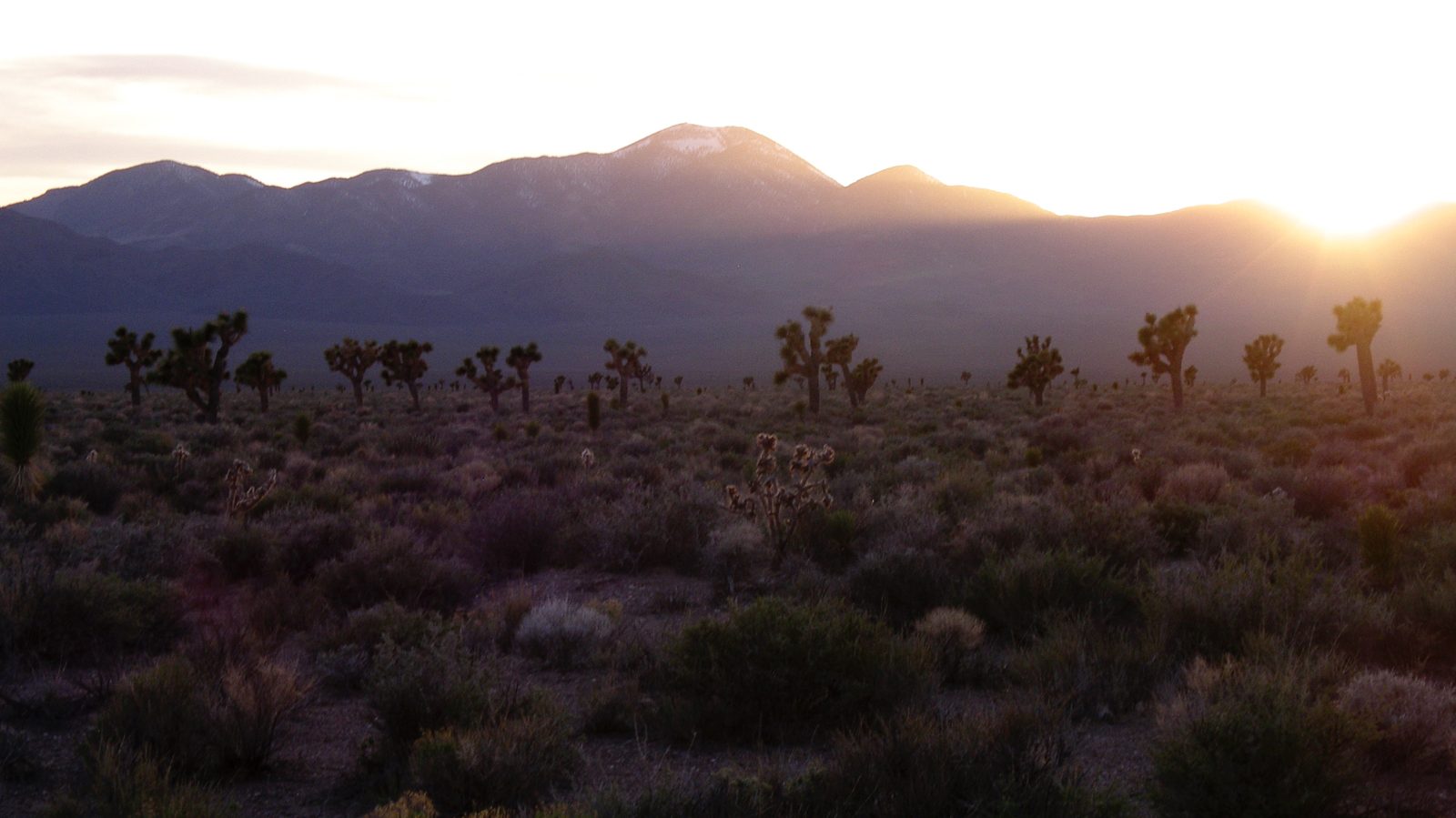Gathering the seeds of new science

As the Joshua Tree Genome Project kicks off its NSF-funded study of climate adaptation in our favorite spiky desert plants, we’re posting updates on the progress of our work. Today we have a blog post from Olivia Turner, one of four interns with the Chicago Botanic Garden who’re working with JTGP collaborators Lesley DeFalco and Todd Esque to plant thousands of Joshua tree seedlings in experimental common gardens. This post was originally published on the website of the CBG’s internship program.
Hi all! This is Olivia. I am part of a 4 person intern team here on the Mojave Desert, NV working with the USGS on the Joshua Tree Genome Project.
This project is in collaboration with a handful of academic partners from all over the States and our mentors here in Nevada are among the Principle Investigators because they were some of the first scientists to ever investigate the life cycle, reproduction, demography, and the effects of climate change on Joshua trees!
So, why the JTGP?
Joshua trees are an icon of the Mojave, provide food for a large range of desert organisms, and have an incredible relationship with their obligate moth pollinators. Both organisms have a long co-evolutionary history together which is known to result in Joshua tree population differentiation. Given the changes in climate that are projected for the Mojave and surrounding areas, the JT is now also going to be facing selection based on abiotic factors.
Therefore, the Joshua Tree Genome Project was created with the goal of examining the Joshua tree’s local adaptation to climate, with the purpose of exploring the primary source of selection across populations (climate [abiotic] vs. pollinator driven population differentiation [biotic]). This will be done by identify ecophysiological traits that determine seedling tolerance to climate change and the genes that structure these traits (Project Proposal, 2020). Crazy cool! It is a multi-year study and we have the good fortune of being here right at the start. Oh, and of course, this project also involves sequencing, for the first time, the Joshua tree genome.
Our role as CLM interns

Here at the USGS, we will handle all logistical and practical matters related to the establishment and monitoring of the JTs. This means planting and growing more than 3,000 JTs in our local greenhouse which will then be replanted at four different common garden sites throughout the Mojave. These four sites represent both the extremes and norms of climate existing across the Mojave. We will then have the opportunity to collect preliminary data and even do some experimental work.
These common garden trees will be the subjects in genetic analyses and physiological assessments that will be occurring in later years of the study. The work of the USGS and our role as CLM interns is paramount to the establishment and future success of this amazing project.
Kicking it off
This week (among orientations and wrapping up paperwork) we worked on counting and cleaning Joshua tree seed collected from a multitude of populations and individuals. This counting and sorting of seed is necessary for the next step: planting!
Counting seeds was a great opportunity to see the range of populations we will be working with and the number of individual trees that are a part of this study.
We are so excited to start planting and working in the greenhouse next week-those 3,000 Joshua trees are calling us!
Until next time,
Olivia T.




You must be logged in to post a comment.